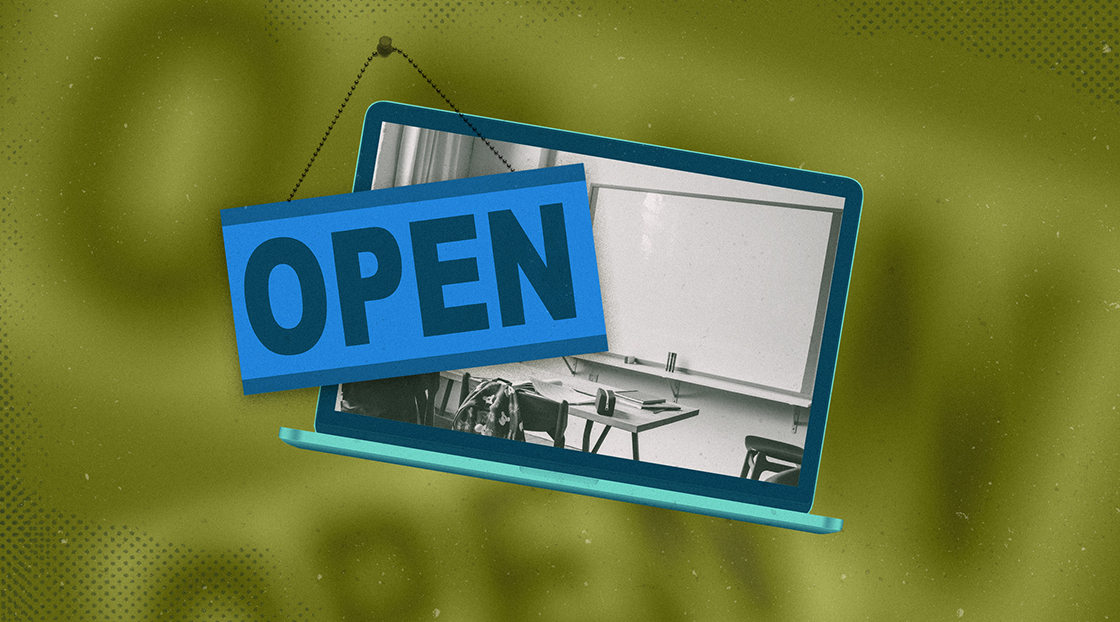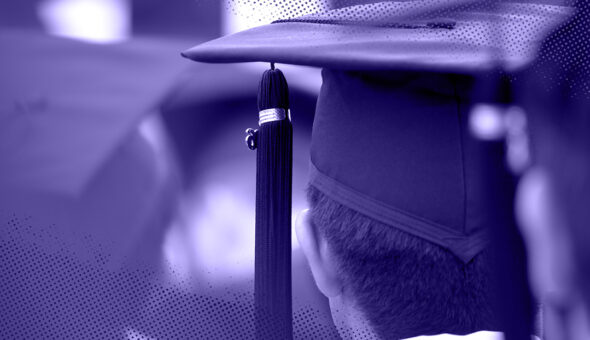Before things went sideways this year due to the COVID-19 global pandemic, there were more than 3 million students in the United States enrolled exclusively in distance education courses at degree-granting post-secondary institutions. Most of these students didn’t go to a physical campus and they were used to a remote learning environment. That was their normal.
And then the pandemic hit. Brick-and-mortar institutions closed in March, one after another. The reaction to an infectious disease was to immediately send students home. Suddenly, what had been the student experience for the few, became the new normal for the many, as students throughout the country went online for their college experiences.
According to The Chronicle’s reopening tracker, 44 percent of the institutions tracked (nearly 3,000 two- and four-year schools) reopened this fall with either a fully online or a primarily online delivery model. That meant nearly two-thirds of college students were learning partially or fully online — and most of these students were likely hoping to experience higher education in a traditional on-campus environment. Instead, they were greeted with an endless gauntlet of Zoom classes and student support structures that had been cobbled together, some better than others, with a variety of digital platforms. Those systems that had long relied on face-to-face interactions were suddenly forced to go virtual as well.
Supporting online or remote learners has always been somewhat of a fringe activity for most higher education institutions. Prior to the pandemic, most student affairs divisions were structured to serve on-campus students. Those institutions with robust online learning initiatives often had separate student support services for online students. But now, every college in the nation has been thrust into operating, or at least strongly weighing, what virtual, online student services look like. The question is, will these institutions continue down these paths once a COVID vaccine is available? Or will they return to their old ways of working, and ignore the continuing trend toward hybrid and online higher education?
From On-the-Periphery to Essential Support
The authors of Future-Proof: Reimagining Student Affairs for Modern Learners, a white paper produced by Whiteboard Advisors in partnership with NASPA, InsideTrack, and UPCEA, make the case that “online is a delivery mode, not a student type,” and that the “mode of delivery should not determine what kinds of service students receive.”
However, in the same paper, online learner support is labeled as a “nascent issue for student affairs professionals.” In fact, a survey of NASPA members revealed that only 7 percent of student affairs practitioners felt that existing functional areas address the needs of online learners to a great extent, while nearly half of respondents said that the current functional areas do not address those needs at all.
Meanwhile, according to a report on online college students published by Wiley Education Services in June, “more than 70 percent of colleges and universities expect to launch one to four new online undergraduate programs over the next three years.”
Both studies collected their data before COVID struck, but the paradoxical trendlines are clear: Demand for online higher education offerings are growing, but the requisite student services are not nearly able to back up those students.
The Clarion Call Has Been Made
The pandemic has clearly pushed student affairs, and the support/engagement structures that they champion, into new realms of digital possibility. When schools shut their physical campuses in March, career services, academic advising, admissions/recruitment, counseling/mental health and other functional areas rushed toward rapid digital transformation.
Asynchronous became a term that was not just synonymous with online learning, but also with student success structures. Virtual events delivered via bespoke recruitment platforms, a focus on remote career development, telehealth counseling conversations, and advising sessions in Zoom all became commonplace, if not the norm.
But will they continue after things settle down? Will the current state of pandemic-driven services progress? Or will the existing functional areas within student affairs fall back into known behaviors?
The long-running push by NASPA, the largest student affairs association, to move student services into an all-student (online and on-campus), inclusive model of support, has been more of a slow-paced marathon than a sprint, but they have made some headway.
With its adoption of a shared technology competency framework with ACPA (the second largest student affairs group in the U.S.) in 2015, online student support became a foundational outcome for practitioners. The framework included two important aspects that relate to online learners:
“Ensure that one’s educational work with and service to students is inclusive of students participating in online and hybrid format courses and programs.”
And also:
“Initiate the development of holistic educational interventions designed for students participating in courses and other educational experiences delivered via hybrid and online formats.”
That was 2015. Five years later, the need to put those sentiments into a wide-ranging practice is urgent. It’s incumbent that the student affairs profession – made up of practitioners, associations, and graduate preparation programs – comprehensively moves to support online learners. Otherwise, two things will likely happen: An erosion of influence/impact will occur as the student affairs profession cedes its position as the heart of student engagement and student services for online learners will lack a cohesive set of champions.
The shift that has taken place within the overall college experience means that students are often learning via online modalities and therefore require significant support initiatives. This is a pivot that has reinvented the very definition of “normal” in higher education.








